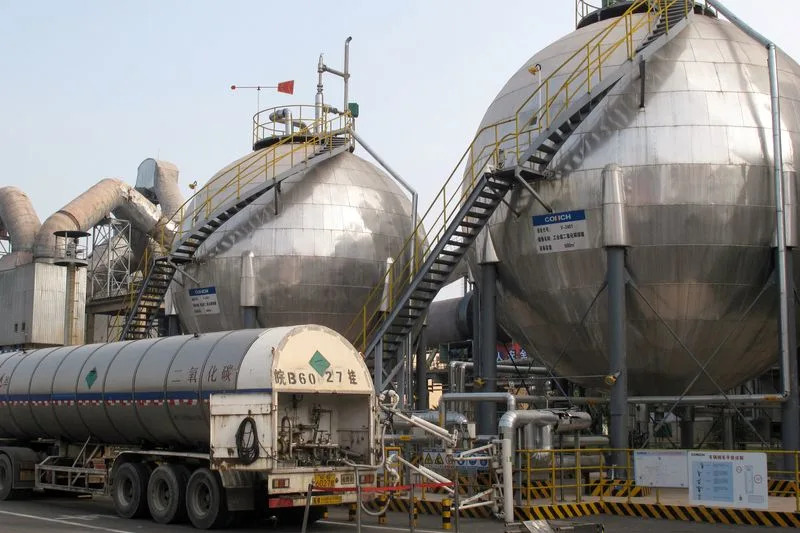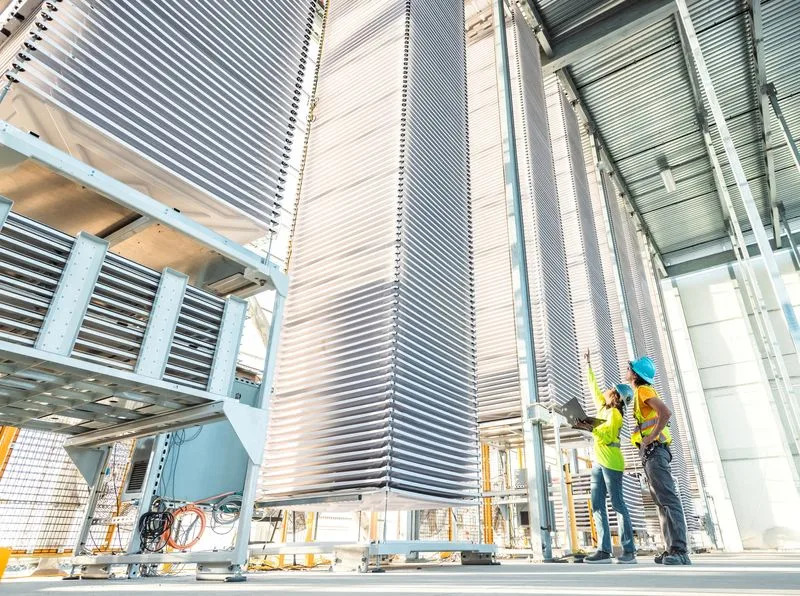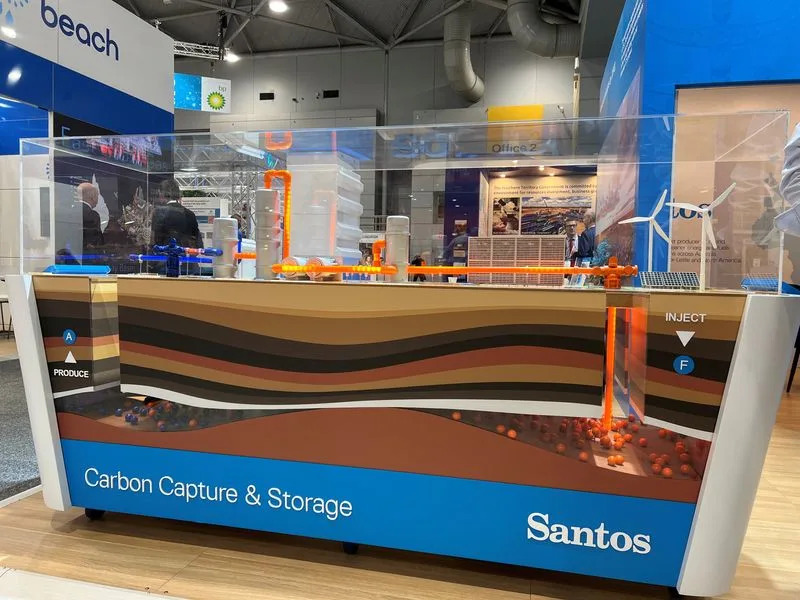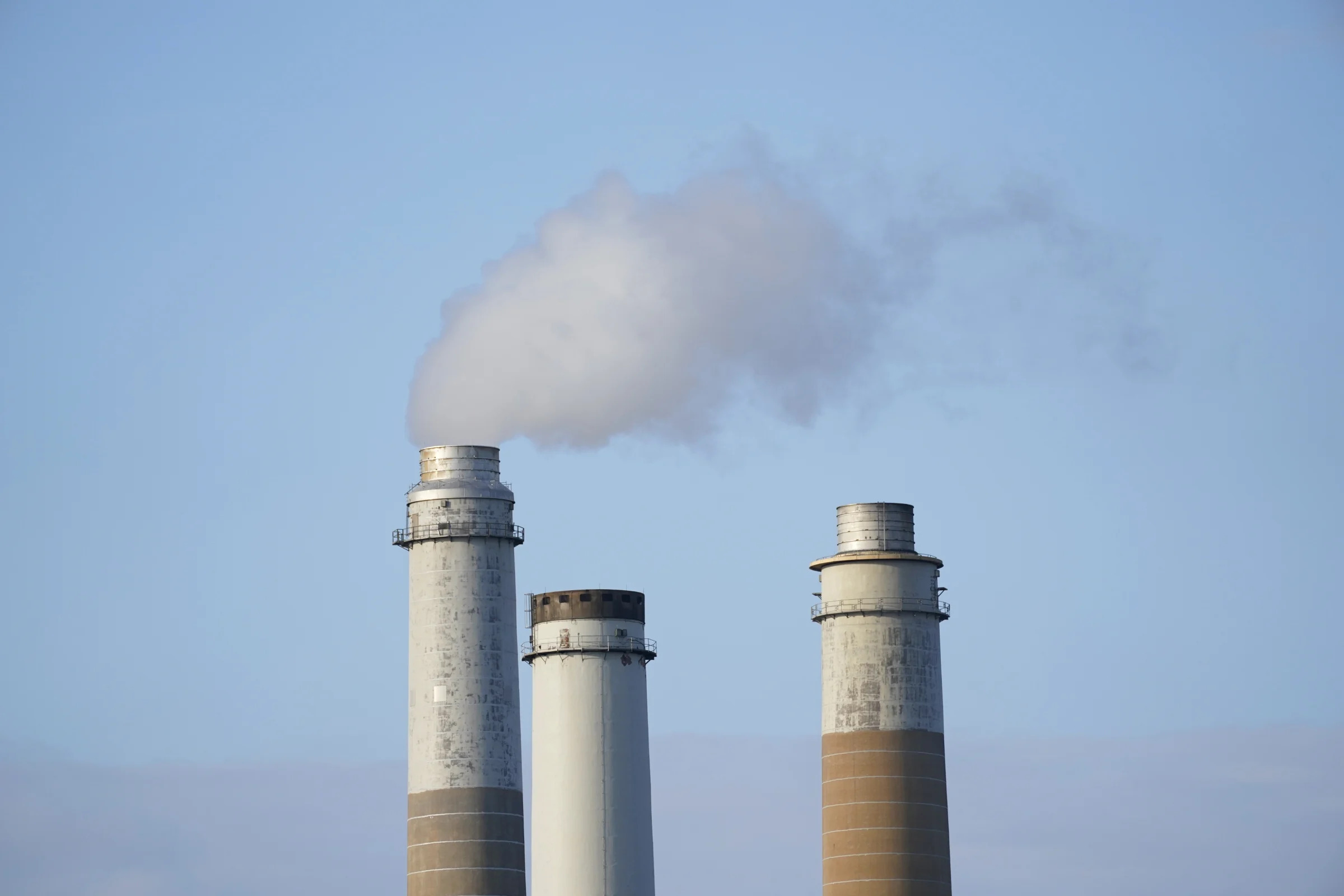Why carbon capture is no easy solution to climate change

Technologies that capture carbon dioxide emissions to keep them from the atmosphere are central to the climate strategies of many world governments as they seek to follow through on international commitments to decarbonize by mid-century.
They are also expensive, unproven at scale, and can be hard to sell to a nervous public.
As nations gather for the 28th United Nations climate change conference in the United Arab Emirates at the end of November, the question of carbon capture’s future role in a climate-friendly world will be in focus. Here are some details about the state of the industry now, and the obstacles in the way of widespread deployment:
FORMS OF CARBON CAPTURE
The most common form of carbon capture technology involves capturing the gas from a point source like an industrial smokestack. From there, the carbon can either be moved directly to permanent underground storage or it can be used in another industrial purpose first, variations that are respectively called carbon capture and storage (CCS) and carbon capture, utilization, and storage (CCUS).
There are currently 42 operational commercial CCS and CCUS projects across the world with the capacity to store 49 million metric tons of carbon dioxide annually, according to the Global CCS Institute, which tracks the industry. That is about 0.13% of the world’s roughly 37 billion metric tons of annual energy and industry-related carbon dioxide emissions.
Some 30 of those projects, accounting for 78% of all captured carbon from the group, use the carbon for enhanced oil recovery (EOR), in which carbon is injected into oil wells to free trapped oil. Drillers say EOR can make petroleum more climate-friendly, but environmentalists say the practice is counter-productive.
The other 12 projects, which permanently store carbon in underground formations without using them to boost oil output, are in the U.S., Norway, Iceland, China, Canada, Qatar, and Australia, according to the Global CCS Institute.
Another form of carbon capture is direct air capture (DAC), in which carbon emissions are captured from the air.
About 130 DAC facilities are being planned around the world, according to the International Energy Agency (IEA), though just 27 have been commissioned and they capture just 10,000 metric tons of carbon dioxide annually.
The U.S. in August announced $1.2 billion in grants for two DAC hubs in Texas and Louisiana that promise to capture 2 million metric tons of carbon per year, though a final investment decision on the projects has not been made.
HIGH COSTS
One stumbling block to rapid deployment of carbon capture technology is cost.
CCS costs range from $15 to $120 per metric ton of captured carbon depending on the emissions source, and DAC projects are even more expensive, between $600 and $1,000 per metric ton, because of the amount of energy needed to capture carbon from the atmosphere, according to the IEA.
Some CCS projects in countries like Norway and Canada have been paused for financial reasons.
Countries including the U.S. have rolled out public subsidies for carbon capture projects. The Inflation Reduction Act, passed in 2022, offers a $50 tax credit per metric ton of carbon captured for CCUS and $85 per metric ton captured for CCS, and $180 per metric ton captured through DAC.
Though those are meaningful incentives, companies may still need to take on some added costs to move CCS and DAC projects ahead, said Benjamin Longstreth, global director of carbon capture at the Clean Air Task Force.
Some CCS projects have also failed to prove out the technology's readiness. A $1 billion project to harness carbon dioxide emissions from a Texas coal plant, for example, had chronic mechanical problems and routinely missed its targets before it was shut down in 2020, according to a report submitted by the project’s owners to the U.S. Department of Energy.
The Petra Nova project restarted in September.
LOCATION, LOCATION, LOCATION
Where captured carbon can be stored is limited by geology, a reality that would become more pronounced if and when carbon capture is deployed at the kind of massive scale that would be needed to make a difference to the climate. The best storage sites for carbon are in portions of North America, East Africa, and the North Sea, according to the Global CCS Institute.
That means getting captured carbon to storage sites could require extensive pipeline networks or even shipping fleets – posing potential new obstacles.
In October, for example, a $3 billion CCS pipeline project proposed by Navigator CO2 Ventures in the U.S. Midwest - meant to move carbon from heartland ethanol plants to good storage sites - was canceled amid concerns from residents about potential leaks and construction damage.
Companies investing in carbon removal need to take seriously community concerns about new infrastructure projects, said Simone Stewart, industrial policy specialist at the National Wildlife Federation.
"Not all technologies are going to be possible in all locations," Stewart said.
UN report says world is racing to well past warming limit as carbon emissions rise instead of plunge.
Earth is speeding to 2.5 to 2.9 degrees Celsius (4.5 to 5.2 degrees Fahrenheit) of global warming since pre-industrial times, set to blow well past the agreed-upon international climate threshold, a United Nations report calculated.
AES Indiana Petersburg Generating Station, a coal-fired power plant, operates in Petersburg.
To have an even money shot at keeping warming to the 1.5-degree Celsius (2.7 degrees Fahrenheit) limit adopted by the 2015 Paris climate agreement, countries have to slash their emissions by 42% by the end of the decade, said the U.N. Environment Programme’s Emissions Gap report issued Monday. Carbon emissions from the burning of coal, oil and gas rose 1.2% last year, the report said.
This year Earth got a taste of what’s to come, said the report, which sets the table for international climate talks later this month.
Through the end of September, the daily global average temperature exceeded 1.5 degrees Celsius above mid-19th century levels on 86 days this year, the report said. But that increased to 127 days because nearly all of the first two weeks of November and all of October reached or exceeded 1.5 degrees, according to the European climate service Copernicus. That's 40% of the days so far this year.
On Friday, the globe hit 2 degrees Celsius (3.6 degrees) above pre-industrial levels for the first time in recorded history, according to Copernicus Deputy Director Samantha Burgess.
“It’s really an indication that we are already seeing a change, an acceleration,” said report lead author Anne Olhoff of Denmark’s climate think tank Concito. “Based on what science tells us, this is just like a whisper. What will be in the future will be more like a roar.”
It's dangerous already, said UNEP Director Inger Andersen.
“Temperatures are hitting new heights, while extreme weather events are occurring more and more often, developing faster and becoming much more intense,” Andersen said. The new report “tells us that it's going to take a massive and urgent shift to avoid these records falling year after year.”
The 1.5-degree goal is based on a time period measured over many years, not days, scientists said. Earlier reports put Earth reaching that longer term limit in early 2029 without dramatic emission changes.
To keep that from happening, the countries of the world have to come up with more stringent goals to cut emissions of carbon dioxide and implement policies to act on those goals, Olhoff said.
In the past two years only nine countries have come up with new goals, so that hasn’t moved the needle, but some countries, including the United States and those in Europe, have put policies in place that slightly improved the outlook, she said.
The United States’ Inflation Reduction Act, which has $375 billion in spending on clean energy, by 2030 would reduce yearly emissions of carbon dioxide by about 1 billion metric tons, Olhoff said.
That sounds like a lot, but the world in 2022 spewed 57.4 billion metric tons of greenhouse gases. Current country pledges would trim that to 55 billion metric tons, and to limit warming to the 1.5 degree mark emissions in 2030 have to be down to 33 billion metric tons. That's an “emissions gap” of 22 billion metric tons.
United Nations Secretary-General Antonio Guterres said “the emissions gap is more like an emissions canyon — a canyon littered with broken promises, broken lives and broken records.”
That’s why the report said the chance of keeping warming at or under 1.5 degrees is about one-in-seven or about 14%, “very, very slim indeed,” Olhoff said.
If the world wants to settle for a warming limit of 2 degrees Celsius — a secondary threshold in the Paris agreement — it only has to trim emissions down to 41 billion metric tons, with a gap of 16 billion metric tons from now, the report said.
Because the world has already warmed nearly 1.2 degrees Celsius (2.2 degrees Fahrenheit) since the mid-19th century, the report’s projections would mean another 1.3 to 1.7 degrees Celsius (2.3 to 3.1 degrees Fahrenheit) warming by the end of this century.
For two years countries have known they have to come up with more ambitious emission cuts targets if the world wants to limit warming to 1.5 degrees, but “none of the large emitters have changed their pledges,” said study co-author Niklas Hohne, a scientist at the New Climate Institute in Germany.
That’s why for the past few years the grim outlook from annual Emissions Gap reports barely changed, Olhoff said.
This year’s emissions gap report is accurate yet not surprising and the projected temperature range fits with other groups’ calculations, said Climate Analytics scientist Bill Hare, who wasn’t part of the report.
Guterres reiterated his call for countries to phase out the use of fossil fuels in time to keep the 1.5 degree limit alive, saying “otherwise we're simply inflating the lifeboats while breaking the oars.”
“We know now that the impacts of climate change, of global warming of somewhere between 2.5 and 3 degrees Celsius are going to be massive,” Olhoff said in an interview. “It’s basically not a future I think anybody would want for their children and grandchildren and so forth. The good news, of course, is that we can act and we know what we have to do.”
- Questions and Answers
- Opinion
- Story/Motivational/Inspiring
- Technology
- Art
- Causes
- Crafts
- Dance
- Drinks
- Film/Movie
- Fitness
- Food
- Παιχνίδια
- Gardening
- Health
- Κεντρική Σελίδα
- Literature
- Music
- Networking
- άλλο
- Party
- Religion
- Shopping
- Sports
- Theater
- Wellness
- News
- Culture
- War machines and policy





